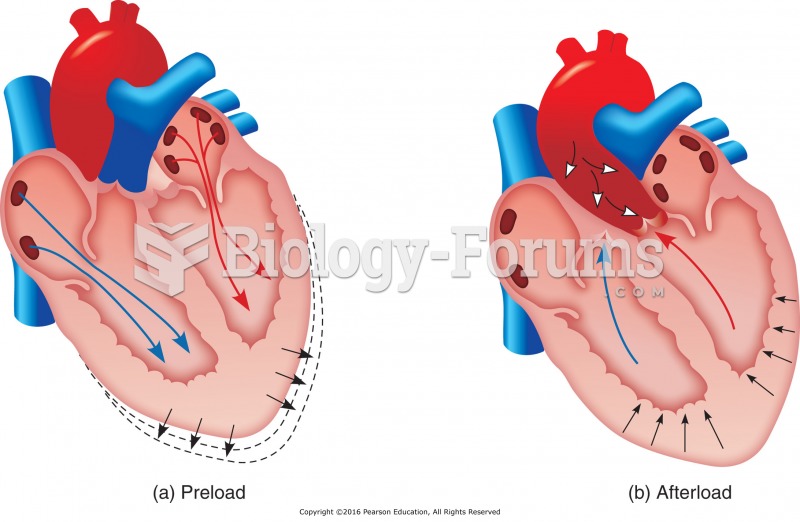|
|
|
During pregnancy, a woman is more likely to experience bleeding gums and nosebleeds caused by hormonal changes that increase blood flow to the mouth and nose.
The Romans did not use numerals to indicate fractions but instead used words to indicate parts of a whole.
A strange skin disease referred to as Morgellons has occurred in the southern United States and in California. Symptoms include slowly healing sores, joint pain, persistent fatigue, and a sensation of things crawling through the skin. Another symptom is strange-looking, threadlike extrusions coming out of the skin.
Acetaminophen (Tylenol) in overdose can seriously damage the liver. It should never be taken by people who use alcohol heavily; it can result in severe liver damage and even a condition requiring a liver transplant.
Vaccines prevent between 2.5 and 4 million deaths every year.
 a) Preload is the degree to which the ventricles are filled with blood and the myocardial fibers are ...
a) Preload is the degree to which the ventricles are filled with blood and the myocardial fibers are ...
 Two lymphocytes that are reactive in a 19-year-old college student with infectious mononucleosis. ...
Two lymphocytes that are reactive in a 19-year-old college student with infectious mononucleosis. ...





